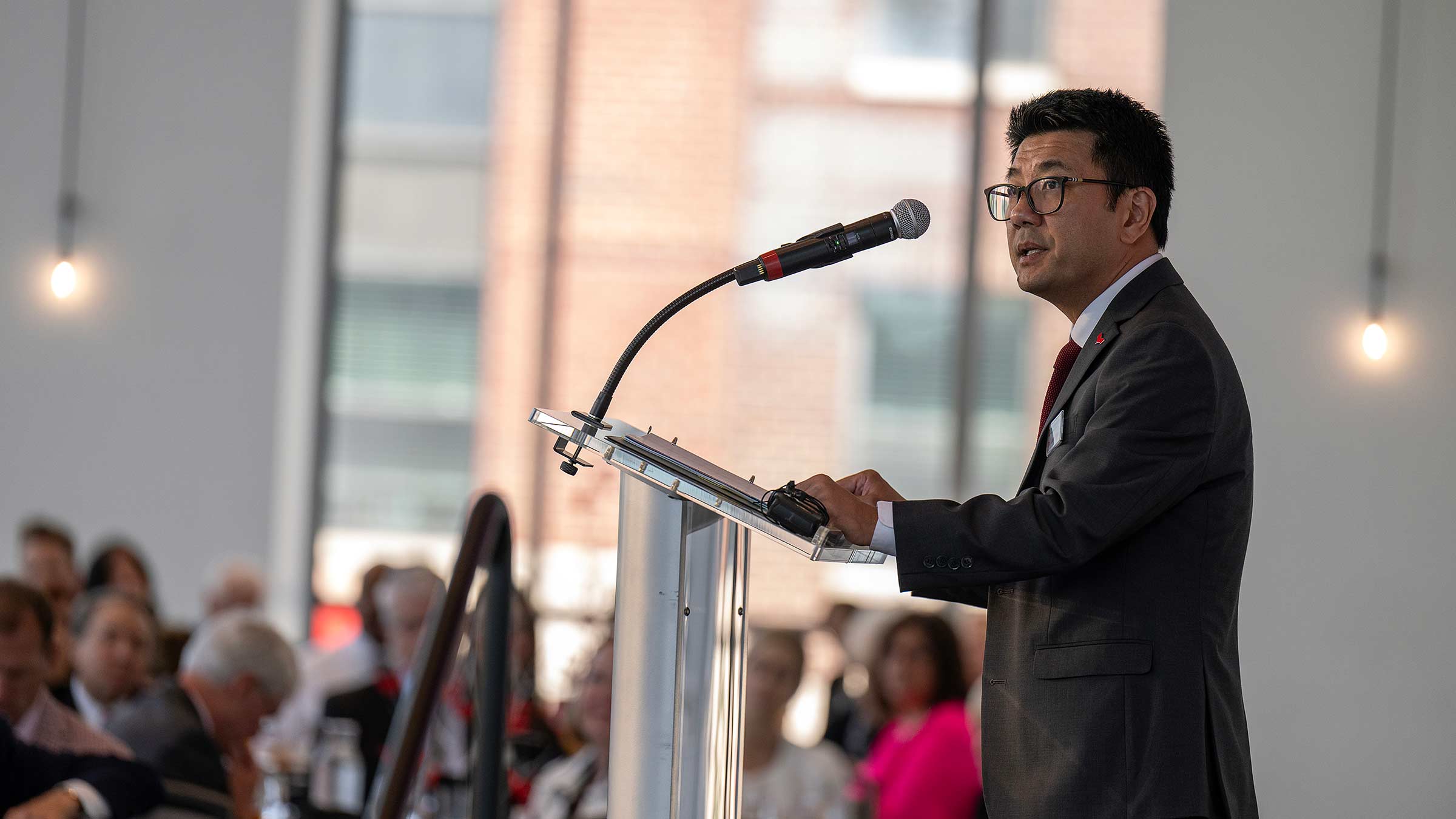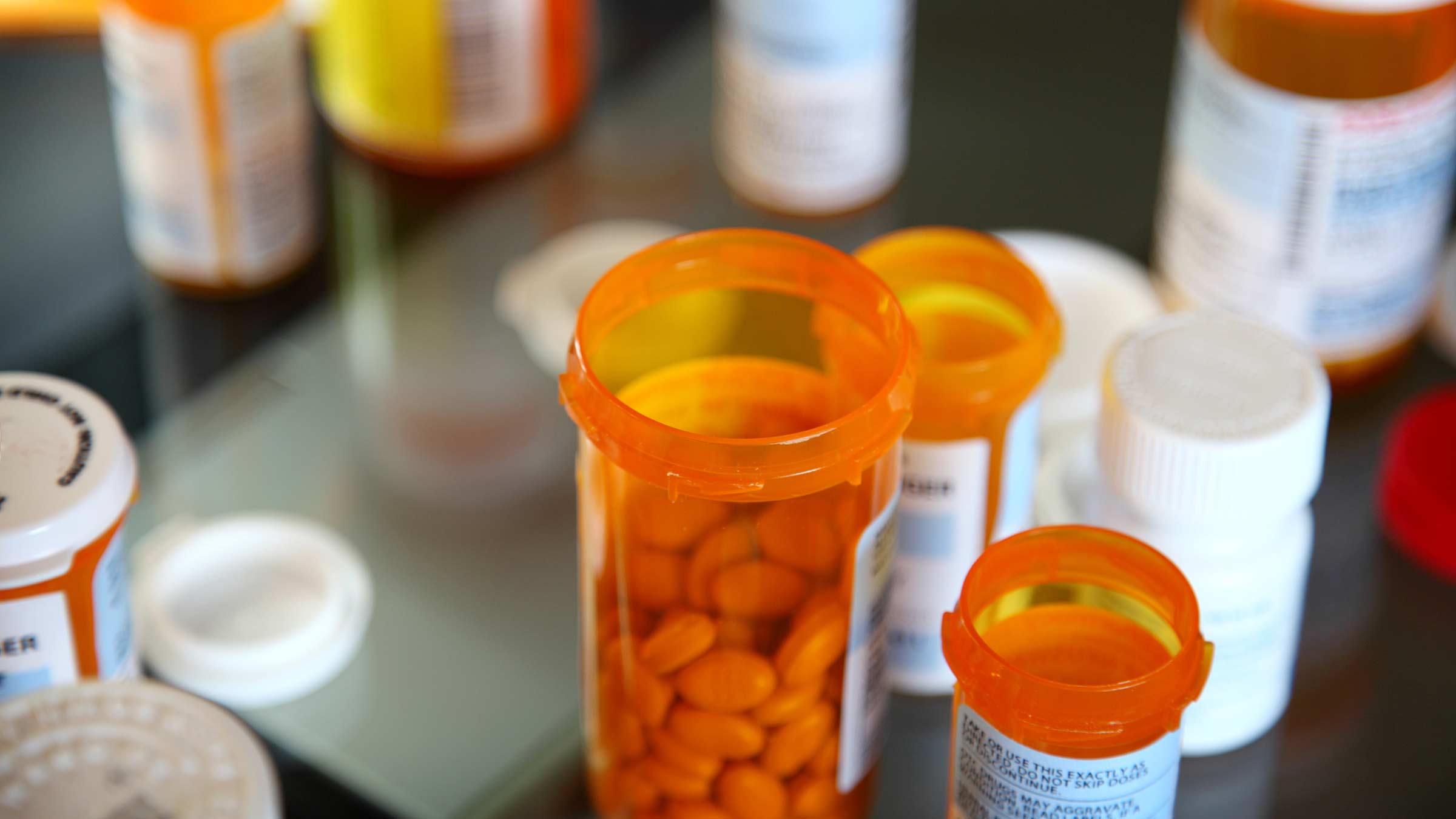
Since the COVID-19 pandemic began, The Ohio State University Wexner Medical Center has served significantly more people in their homes, including many individuals who may not have otherwise received care.
For many, the convenience of being cared for in their homes allowed them to avoid the hurdles of transportation, parking and child care costs, as well as the need to take time off work for an appointment.
Virtual visits
As part of an effort already underway to increase availability of virtual health visits, the Ohio State Wexner Medical Center offered 800 telehealth appointments between July 2019 and March 2020.
Offering more virtual visits allowed patients to efficiently get medical care from the safety of their own homes. And telemedicine has also helped people save parking and transportation costs as well as missed time from work.
“Access to transportation should not be a constraint for getting care,” says Aparna Dial, MS, MBA, LEED AP, senior director of Sustainability and Strategic Services for The Ohio State University and the Ohio State Wexner Medical Center.
“Telehealth appointments have not only resulted in better access and higher patient satisfaction rates, but they also saved over 2 million gallons of gas for patients,” Dial says.
Remote monitoring
In the coming year, patients with chronic illnesses could be monitored in real time without ever having to leave their homes. This progressive step in health care could be accomplished with technology that the Ohio State primary care clinical team is currently testing. The company supplying the devices would also offer wireless devices to patients without them.
If a patient has high blood pressure, for example, they’ll be able to take home a blood pressure cuff that will connect remotely to a system that tracks their blood pressure levels and delivers the information to health care professionals.
When a patient’s blood pressure spikes, a health care professional can help bring that down, for example, by reaching out to a pharmacist to adjust the patient’s medication.
Keeping patients’ health in constant check could help them avoid hospitalizations or trips to the emergency department, says Kyle Sharp, executive director of Faculty Group Practice and OSU Physicians, Inc., at the Ohio State Wexner Medical Center.
“This is a robust tool,” he says. “There’s a lot we can do just by getting this constant stream of information on the patient.”
In-home visits
During the pandemic, the Ohio State Wexner Medical Center significantly ramped up its home-based and post-acute care offerings to meet patients where they are, and this will continue long-term.
Building a more connected care continuum that extends beyond outpatient clinics includes The Ohio State University Wexner Medical Center Home Care, Ohio State Home Medical Equipment and stronger, more clinically integrated relationships with skilled nursing facilities, long-term acute care hospitals and hospice care facilities.
Extra care options “empower the patients to choose how they want to receive care. If they want to receive care in the home, they have that option, no matter where their home is,” says Rachit Thariani, chief administrative officer of the Post-Acute and Home-Based Care Division for the Ohio State Wexner Medical Center.
Read other stories in this series from our Health Equity and Anti-Racism report
Other mobile initiatives make health care more accessible
The Ohio State Wexner Medical Center has several initiatives to make health care more accessible, including mobile units, outreach programs and innovative, expanded methods of health care. Just a few examples:
- The Community Care Coach is a state-of-the-art medical office on wheels, staffed by doctors, midwives and medical assistants who provide primary care, obstetrics and gynecology care, health screenings, immunizations, COVID-19 testing and lab services. It features two exam rooms, a waiting room and a lab.
- Dental H.O.M.E., the Ohio State College of Dentistry’s Health Outreach Mobile Experience coach, is a pediatric mobile dental clinic that travels to Columbus City Schools providing dental care — the top unmet health care need of children and adults in Ohio’s underserved communities.
- The OSUCCC – James Mobile Education Kitchen travels to community festivals, public health events and health-related fairs to educate the public about healthy, cancer-preventive foods and how to prepare these foods in easy, tasty ways.
- The James Mobile Mammography Unit has been traveling to businesses, county health clinics, churches and underserved areas to screen women for breast cancer for more than three decades. Partnering with the Center for Cancer Health Equity at The Ohio State University Comprehensive Cancer Center – Arthur G. James Cancer Hospital and Richard J. Solove Research Institute (OSUCCC – James), the mobile unit has provided mammograms to historically marginalized and uninsured women by connecting them to the Ohio Breast and Cervical Cancer Early Detection Program. In 2017, the mobile mammography program expanded to include an additional mobile unit. Both units are equipped with the latest in mammography technology, including 3D or tomosynthesis.

We’re removing barriers to better health and wellness
See how Ohio State is elevating experiences and outcomes for every patient, employee, learner and community member.
Read More



